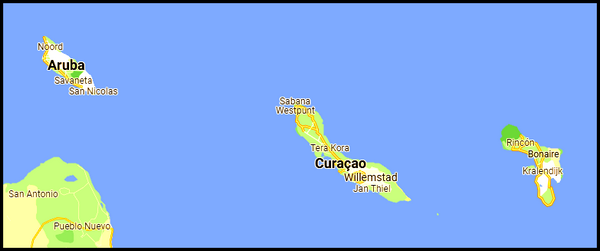
All About the Caribbean ‘ABC Islands’
The so-called ‘ABC Islands’ are located in the south Caribbean Sea, just off the northern coast of Venezuela. They include the three islands of Aruba, Bonaire and Curacao.
All three islands are small sandy, relatively-flat islands rimmed by powdery white-sand beaches and clear aquamarine seas. Unlike most Caribbean islands, they have an unusual hot, semi-arid climate with very little rainfall and perpetually sunny days year-round, making them ideal for beach vacations.
But it’s not just the islands’ climate and proximity to one another that groups them together as the ABC Islands. All three islands have a near-identical history. In particular, they were all initially settled by Coquieto Indians from South America then later colonized by the Spanish for over 100 years, quickly followed by the Dutch, who ruled each island for 350 years or longer.
However, while the islands have nearly the same geography, climate, flora & fauna, topography, history and current economies & cultures, each island has several significant geographical & historical differences that make each unique.
Read on for full details:
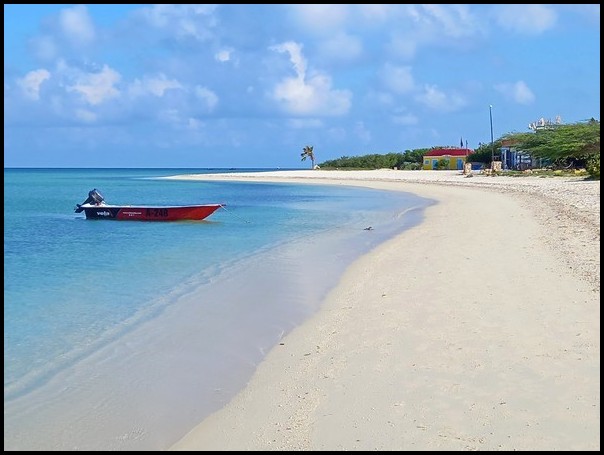
Geography – Climate – Flora & Fauna of ABC Islands
The ABC Islands all lie on the relatively shallow South American Continental Shelf, off the coast of Venezuela, in a Caribbean region called the Leeward Antilles Islands.
The three islands sit in a nearly-straight line, running east to west. Aruba is the furthest west, with Curacao in the middle and Bonaire to the east.
The islands are also nearly the same shape: long, narrow strips running northwest to southeast. They’re all relatively the same size as well, with only slight differences in size and shape. Curacao is the longest and largest island, while Bonaire has a slight crescent shape.
More specifically, Aruba is roughly almond-shaped with a total land area of just 69 miles sq. / 179 km sq. It is 20 miles / 35 km long and just 6 miles / 10 km across at its widest point.
Curacao is more than twice the size of Aruba, with a total land area of 171 miles sq / 444 km sq. The island is 38 miles / km long and 9 miles / 15 km across at its widest points.
Bonaire is 111 miles sq / 288 km sq in land area. The island is 24 miles / km long and 3-7 miles / km wide.
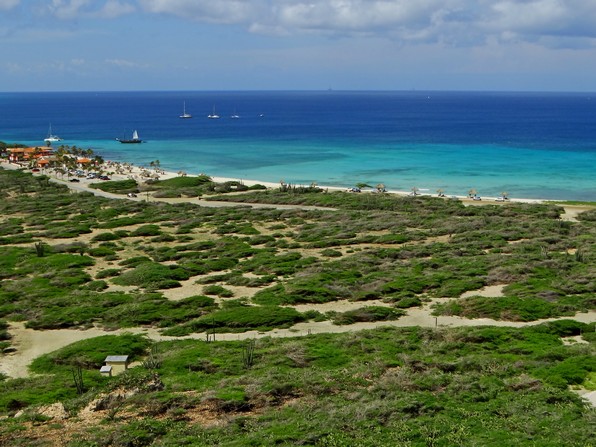
Aruba is relatively flat, although most of the island is slightly hilly. It’s highest peak is a sole ancient volcanic cone, called Hooiberg Hill, peaking at 617 ft. / 188 M in elevation.
Curacao is considerably more mountainous, with its highest peak, Mt. Christoffelberg, at 1230 ft / 375 M.
Bonaire is more or less flat, except in the north, where a hilly region is topped by Brandaris Peak at 790 ft / 240 M.
As noted above, all three islands have a hot, semi-arid climate with very dry soil, very little rainfall and year-round hot sunny days. They have no rivers and little-to-no natural fresh water. Aruba has zero, while Curacoa and Bonaire have some natural springs.

This climate is very unusual for Caribbean islands, most of which have a wet, tropical climate and plenty of natural fresh water.
Ironically, while the land is dry, the climate is quite humid at the ABC islands, with humidity levels at 78-85% year-round.
The hot climate is nearly the same temperature all year, with slight variations. Daytime temperatures are generally 86-92F / 30-33C and nightime temps at 80-84F / 27-29C (note that it rarely falls below 80F / 27C !).
Winter months are slightly cooler, while August and September are the hottest months, with daytime temps usually in the low-mid 90sF / 32-33 C. With high humidity and intense sun, it generally feels closer to 100F / 36-38C.
The hot weather is tempered by the constantly blowing Atlantic Trade Winds coming in from the northeast. In Aruba, they blow across the island, somewhat cooling off the whole island. In Curacoa, however, the winds tend to follow along the northeastern coast.
Luckily for the islands and tourists, the ABC Islands all lie outside the Hurricane Belt. On great occasion, the islands are hit by tropical storms and the outer edges of hurricanes, which generally just bring heavy rain, strong wind and occassional flooding.
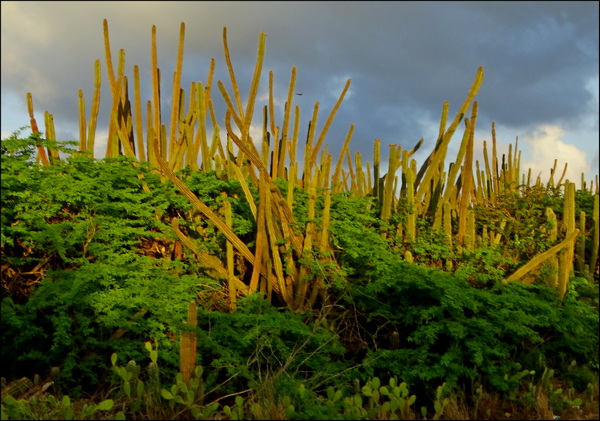
The main flora type throughout the ABC islands is cactus scrub, which is densely-packed tall cactii along with thorny bushes and low arid-loving trees. But the islands also have sand dunes, open savannah, rocky shores, cliffs, caves, interior lagoons, mangroves, hot springs and wetlands.
One distinction of Bonaire is its large salt flats, located at the southern tip of the island. There visitors can see huge square pools of bright pink sea water being desalinized and huge white mounds of salt.
Of course, the islands’ most famous natural features are their absolutely gorgeous powdery white-sand beaches. Each island has dozens of beautiful beaches located around their entire perimeters.
The beaches are surprisingly varied. There are beaches backed by resorts; ‘au naturale’ beaches backed only by dunes, trees or scrub; small curved coves; long straight beaches; wild beaches pounded by strong wind and waves; and beaches with calm, clear shallow water.
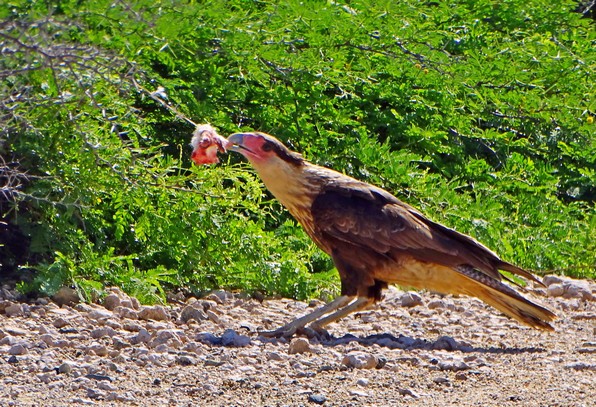
As for animals, many species of iguanas, birds and a few small rodents live on the islands. Most famous are the large flocks of flamingoes on Aruba and Bonaire. A Flamingo Sanctuary is located in southern Bonaire. One distinction of Curacao is its flock of White Tail Deer, which include about 200 deer.
In the 1500s the Spanish colonizers introduced cows, goats, pigs, sheep and donkeys, hoping the animals would thrive on the islands for the Spaniards to create livestock ranches. Some of these animals now roam freely on the islands, while Aruba and Bonaire also have donkey sanctuaries.
All three islands have coral reefs, but Curacao and Bonaire have the most extensive fringing reefs, which make them famous among scuba divers and snorkelers. At many sites, people can reach the reefs by simply walking in from shore.
Bonaire is the most famous for diving and snorkeling. The Bonaire National Marine Park protects the entire island’s coastline, beaches and waters down to 60 M, helping maintain the reefs in pristine condition. More than 350 species of fish, 60 species of corals and sea turtles thrive on the reefs. Warm sea waters range from 79-83F / 26-29C year round.
More over, Bonaire has a reputation as an ecologically-oriented island.

Curacao, however, has the most diverse diving. Just off the island’s northeastern coast the sea drops suddenly down to great depths. This so called Blue Edge provides great wall diving. The southwestern point offers drift diving, while the fringing reefs around most of the island provide beautiful coral reef dives.
All three islands have national parks that protect large percentages of their land. Aruba’s Arikok National Park and the northern natural, undeveloped lands cover 1/3 of the island.
On Curacao, about half the island is left in a natural state. Christoffel National Park and Shete Boka National Park protect much of the northern end of the island, including turtle nesting sites.
In Bonaire, in addition to the national marine park, Washington Slaaibai National Park covers the mountainous northern ¼ of the island. The Flamingo Sanctuary and salt flats protect the southern end of the island, covering another large chunk of territory.
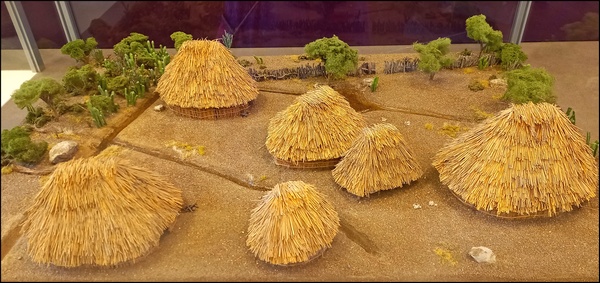
Ancient History of ABC Islands
All three islands were inhabited by Arawak Coquieto Indians in 4000-2000 BC. They migrated from nearby South America, especially from Venezuela. Later waves of Coquieto immigrants also settled on the islands.
Traces of these indigenous Indians can be seen at cave petroglifs on Aruba and samples of ancient-style dwellings on Bonaire. Descendents of the Coquietos make up a large portion of mestizo residents, particularly on Aruba and Bonaire.
Colonial History of ABC Islands
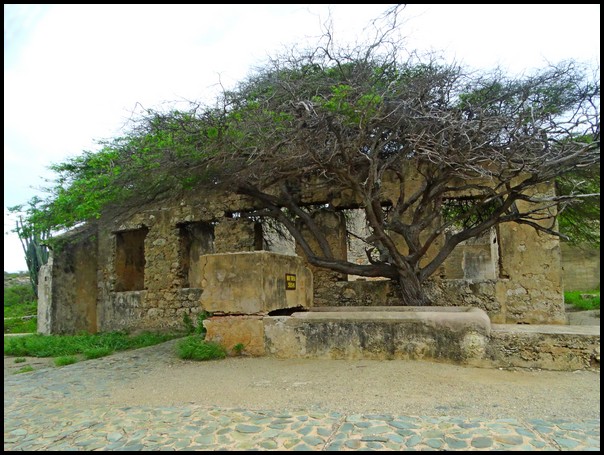
Spanish Colonization of ABC Islands
The ABC Islands were first discovered by Europeans at the turn of the 15th century. The Spanish were the first to claim the islands for themselves.
The Spaniards began colonizing the islands in the early 1500s, establishing a base on Curacao and introducing Catholocism. But due to the islands’ arid climate, the Spanish quickly decided the islands were more or less useless for plantation development. Instead, they forced most of the indigenous islanders to relocate to the island of Hispanola (now the island with Haiti and the Dominican Republic) to work as slaves in mines.
In the late 1500s the Spanish tried another tactic to make the islands profitable. As noted above, they imported cows, sheep, goats, pigs and donkeys to the islands, hoping to turn the islands into ranches for meat and hides.
In Curacao and Bonaire, the cows especially florished and most of those two islands were turned into huge cattle ranches, run by Spanish and Coquieto servants. The animals didn’t thrive as well on Aruba, which was more or less abandoned by the Spanish, while Bonaire was used to a lesser extent than Curacao.
The Spanish ruled ABC islands, rather brutally, for more than 100 years.
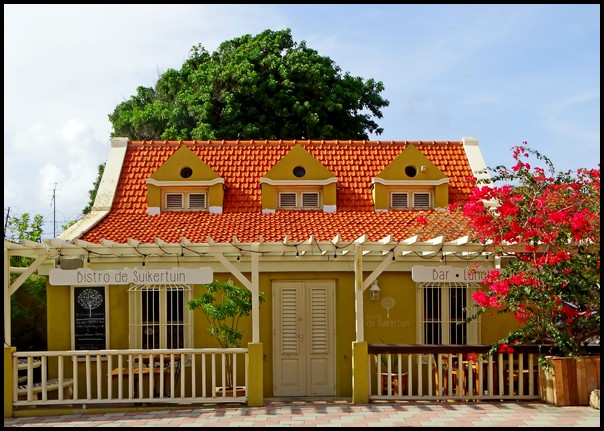
Dutch Colonization of ABC Islands
In 1636, the Dutch gained control of the islands as a result of the Thirty Years War with Spain. The Dutch ended up ruling the ABC Islands for 350+ years (well into the late 1900s – details below).
The Dutch quickly established a port city on Curacao, which became the prominent island of the group throughout its history/colonial rule. They built the beautiful port town of Willemstad, which is now a UNESCO World Heritage Site, filled with gorgeous, colorful colonial Dutch buildings.
They also built several sturdy forts around the island. Several of them still stand, either intact or in partial ruins, and are now tourist sites.
Curacao became an important base for shipping, trade and commerce. Unfortuantely, it also became the Dutch center for the African slave trade for 200 years, from 1662-1863. The Dutch brought or acquired African slaves to be sold around the Caribbean and South America.
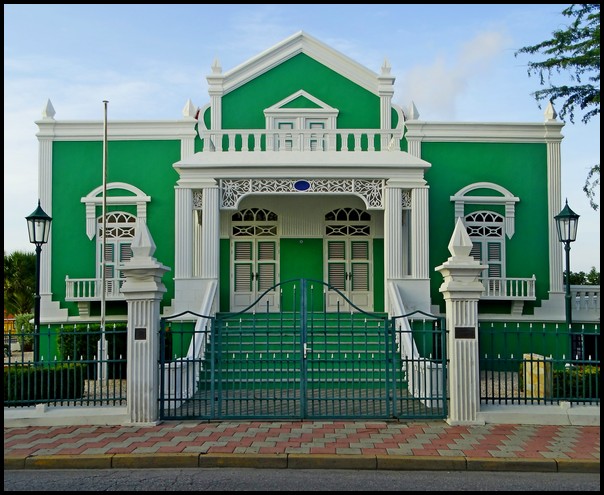
Many Dutchmen grew very wealthy on the slave trade. They built grand homes and estates, adding to the historical beauty of Curacao.
The slave trade became a significant historical feature of Curacao, which influenced the rest of the island’s history. For instance, today a majority of Curacao ‘natives’ are of African descent.
The slave trade also created centuries-long tensions between Dutch and black Curacaoans on the island, which flare up even now, especially due to great differences in wealth and opportunities.
In 1798 in northern Curacao there was a massive slave revolt, which included about 4000 slaves. The revolt lasted one month until the slave owners gained control again. In recent years there have been strikes, civil unrest and protests from time to time, due to economic problems and high unemployment.
Slaves were also taken to Bonaire. where the island was used as a giant government-owned cattle ranch from 1816-1862. The ranch used a mix of convict, African and Coquieto slaves, which nunbered about 400 people.
On Bonaire, the Dutch also developed a large salt production company by desalination of sea water. At the time salt fetched high prices internationally.
Meanwhile, Aruba luckily completely avoided this part of Dutch colonial history. No ranches or plantations were created there. No slaves introduced. And this resulted in a significantly different history, economy and population on Aruba over the centuries.
In particular, about 70% of Arubans are mestizo, a mix of primarily Coquieto, Dutch, Spanish and South American peoples. There’s only about 20% of African descent among locals.

The second major difference for Aruba was that the Dutch introduced aloe vera plants to the island in 1840, importing them from a small island off the coast of west Africa. Aloe vera thrived on Aruba, but the government did not develop an aloe industry.
Instead, a private Ducth islander created a large aloe plantation. By the late 1800s he had created a successful international aloe vera export business, primarily exporting an aloe product used for laxatives.
By the early 1900s about 2/3 of the island was covered in aloe vera plantations and Aruba became one of the world’s largest aloe vera producers. This was also the first major industry on Aruba.
The Dutch abolished the slave trade in 1862. Former slaves on Curacao became tenant farmers to their previous owners, or emmigrated to Cuba & other islands to work or otherwise found work on the AB islands. Many slaves on Bonaire were employed by the government.
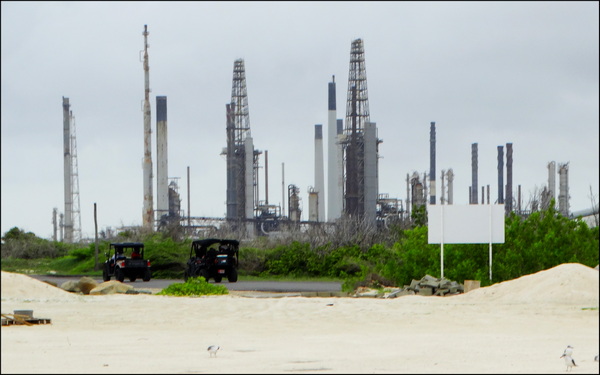
Modern History of ABC Islands
The Dutch retained their ownership of the ABC Islands well into the late 1900s and early 2000s.
In the 1920s oil was discovered in Venezuela. Soon major oil companies built oil refineries on nearby Aruba and Curcao. The first refinery in Aruba opened in 1924, with others soon following.
The refineries on Curacao greatly added to the island’s continuing wealth and economic success. On Aruba they had a much more significant impact. They quickly transformed the island from a poor outback to one of the Caribbean’s wealthiest nations. They also lead to a great decrease in the aloe industry.
The refineries continued churning out refined oil until 1985, when they suddenly closed due to globarl over-supply. On Curacao that lead to a huge economic downturn, one which has continued to the present day, though with some relief from a growing tourist industry.

In Aruba, the refineries’ closure also greatly impacted the island’s wealth and economy for a while. However, back in the mid 1940s the Aruba government had begun promoting tourism.
By the mid 1980s, tourism was already well-established and doing well. From then on the government focused even more on promoting and developing tourism on Aruba, with the result that the island continued to thrive despite the refinery closures.
In 1990 some of the refineries re-opened under other oil companies, but to a lesser capacity. They continue as an important part of the two islands’ economies.
On Bonaire, residents have focused on ecologically-friendly tourism and development. As mentioned above, all the reefs, beaches and reserves are protected on Bonaire. In addition, there are two other national parks, a flamingo sanctuary, a donkey sanctuary and protected bird wetlands. Bonaire also does recycling and has built 12 large wind stations, which supply a large percantage of the island’s power.
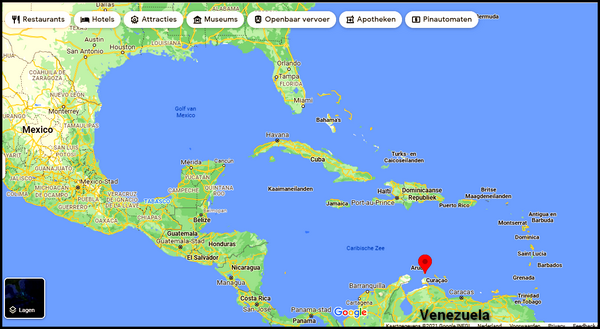
ABC Islands’ many changes of names
During the centuries-long Dutch rule, the ABC Islands have also always been part of the larger Dutch Caribbean (also called Dutch West Indies), which includes all the Dutch island colonies in the Caribbean.
Like Aruba, Bonaire and Curacao, the Netherlands has held control over the three small islands of Sint Maarten, Sint Eustacius and Saba from the early 1600s until present day.
In the 1600s the Dutch also held for variable lengths of time the islands of St. Croix, Tobago, Tortuga, Dutch Virgin Islands (later became British Virgin Islands) and several islands off the coast of Venezuela.
So the extent of the ‘Dutch Caribbean’ has repeatedly changed over the centuries. Eventually the Dutch Caribbean came down to the six islands of Aruba, Bonaire, Curacao, Sint Maarten, Sint Eustacius and Saba.
From 1815-1854 the three ABC islands were officially formed into ‘The Colony of Curacao and Dependencies’.
Then from 1854-2010 a new country was created, called the Netherland Antilles (also called Dutch Antilles). The country included Aruba, Bonaire, Curacao, Sint Maarten, Sint Eustacius and Saba. Together, they officially were considered one ‘Constituent Country of the Netherlands’.
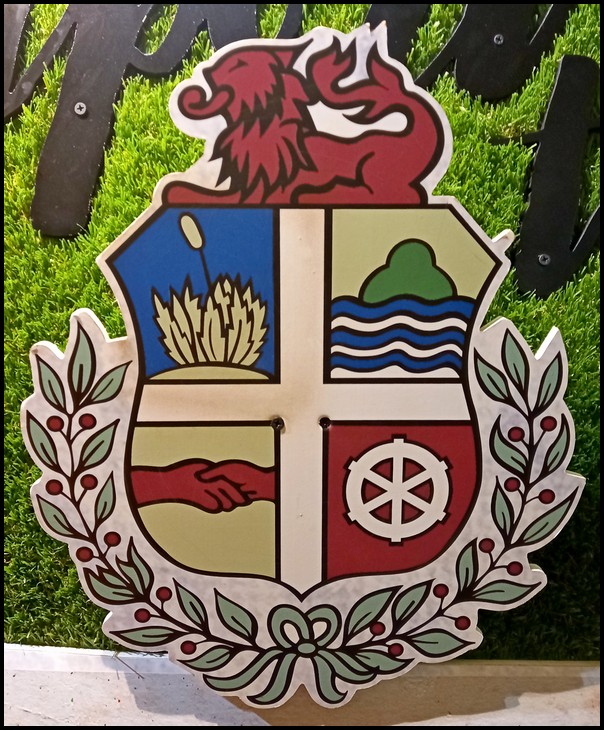
Independence
In 1986 Aruba broke away from the Netherland Antilles to become its own country. That made Aruba the first ABC island to break from Dutch colonization.
Curacao gained its independence 24 years later, in 2010, when the Netherland Antilles was dissolved. Bonaire became a municipality of the Netherlands.
However, Aruba and Curacao are not completely independent from Holland. Officially, they are ‘Constituent Countries of the Netherlands’, along with St. Maarten island.
In this arrangement, the Netherlands is responsible for the countries’ foreign affairs and military protection. The three island countries control their own internal affairs. They each have their own consitutution, flag, coat of arms, national anthem, currencies and official languages.
The island countries are ruled by the King of Netherlands; plus a governor, appointed by the king; a prime minister, elected by the citizens; and a parliament, in turn elected by the prime minister. Their school systems, driving practices and other aspects of daily life generally follow Dutch systems.
The official languages of both Aruba and Curacao are Papamiento and Dutch.
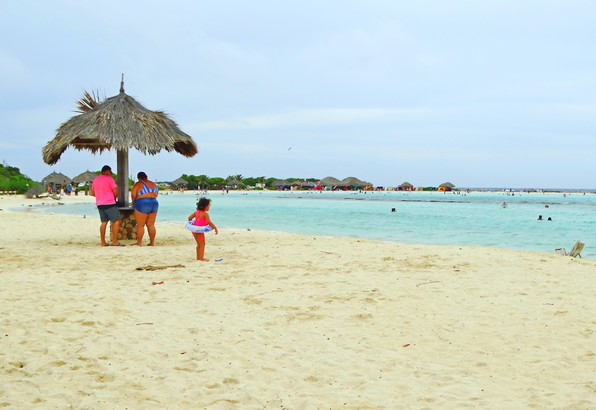
Population of ABC Islands
As noted above, Curacao was always the main island of the three. Not surprisingly, it has the largest population, with 155,000+ residents as of 2019. But it’s population density of 904 people per sq mile is about half that on Aruba.
Aruba’s current population is 116,500+ with a density of 1616 people per sq mile.
Bonaire has a considerably smaller population of just 20,000+ inhabitants, as well as a much lighter population density of only 180 people per sq mile.
For comaparison, the USA has an average population density of 93 people per sq mile. Of course the population distribution isn’t even throughout the US. IN fact, population density ranges from 1.3 people per sq mile to 11,628 people per sq mile.
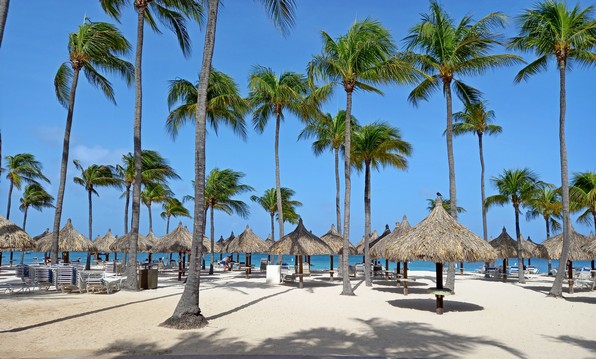
The ABC Islands Today
Nowadays, all three islands are thriving and are great island vacation destinations.
As noted above, all the islands are rimmed by dozens of dazzling white sand beaches and clear aquamarine waters. They all offer snorkeling & diving, outdoor activities, some history & culture and plenty of tourist accommodations, from private rentals to luxury hotels.
They all also have more or less the same flora, fauna, topgraphy and natural diversity. They all feature extensive cactus scrub plus sand dunes, open savannah, caves, cliffs, rock formations, hills and hiking trails.
But, also as mentioned above, each island has a few distinctions and specialties. Following is a summary of what visitors can find at each island.

Curacao
History, culture and/or architecture buffs will be most impressed by Curacao.
To start with, Curacao has by far the largest, most extensive historic Dutch colonial district at its capital, Willemstad. In fact, it’s so remarkable that it’s a UNESCO World Heritage Site.
The island also has several Dutch forts, former slave estates and slave quarters. There are also various specialty museums about the history and culture of Curacao.
Along with Bonaire, Curacao offers the best scuba diving. While Bonaire claims the best ecological practices, and perhaps the most extensive reefs, Curacao has the most diverse diving. The deep sea drop off on the northeast coast is specific to Curacao and provides great wall diving. There’s also drift diving and regular reef dives.
Curacao also has the highest mountains, largest national park and undeveloped regions, and the most extensive hiking/cycling trails.
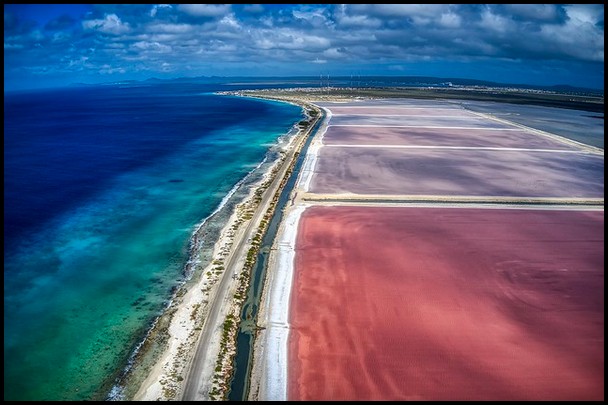
Bonaire
Bonaire is the least developed, least populated and most laid-back island. It’s focus on sustainable development, good ecological practices and nature preservation attract like-minded visitors and lots of scuba divers. Nature lovers can dive, snorkel, go bird-watching, see large flocks of flamingoes and sea turtles.
In addition, the stunning pink salt pools and huge mounds of pure white salt at the south end of the island are unique to Bonaire.
Bonaire has less to offer on the cultural side, with very few historic buildings or museums to visit.
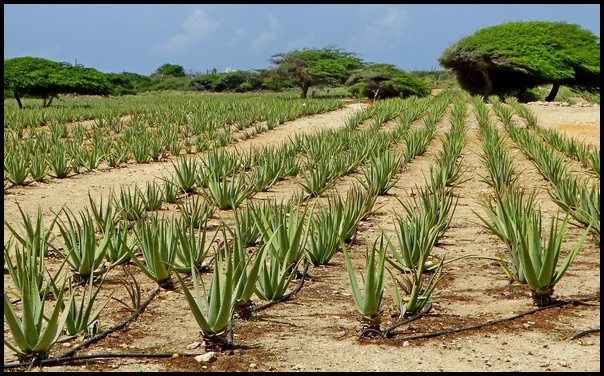
Aruba
Aruba has the longest tourist trade of the three islands. They began promoting the island in the 1940s and have been going strong ever since. The tourist infrastructure is well in place, yet it’s not over-done. Even the largest luxury hotels are on the ‘low-key’ side and the truly ‘touristy’ spots are quite limited.
Diving and snorkeling are on offer, but the dive/snorkeling sites are not nearly a impressive as those on Bonaire and Curacao. Instead, every other kind of water sport, both human-powered and motor-powered, are availabe, as well as various land adventures.
Aruba’s aloe vera industry is unique to the island. There’s an excellent Aloe Vera Museum / plantation / factory with free tours detailing the history and production of various aloe products.
Aruba’s historic and cultural offerings are not quite as extensive as on Curacao, but Oranjestad has a handful of gorgeous historic buildings and museums. Ayo Rocks has caves with ancient petroglyphs from the Coquieto Indians. Historic California Lighthouse and a few beautiful historic churches are also worth visiting.
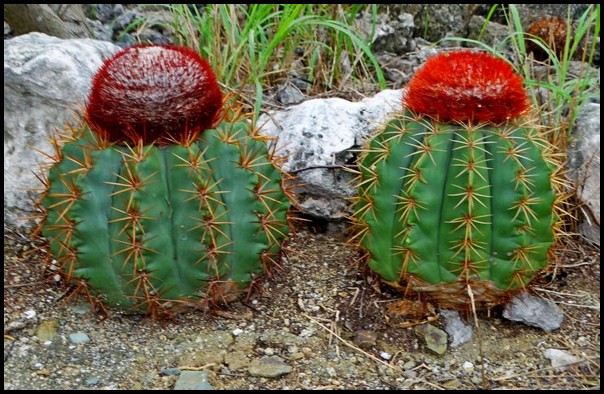
Summary
That concludes my rather detailed report on the beautiful ABC Islands.
This year I’m only able to visit gorgeous Aruba, though luckily I get to stay and explore for two full months. I hope to visit Curacao and Bonaire someday soon. They both sound wonderful.
Meanwhile, I’ll be writing more about Aruba over the next several weeks. So stay tuned!
========================
You might also like:
10 Surprising Facts about Aruba
============================







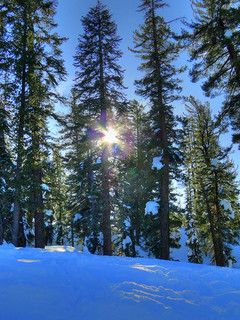

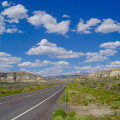


 Hi! I'm Lash, an American nomadic world traveler who's been traveling solo since 1998. I’m passionate about traveling the world nomadically and then sharing it all with you. I hope to inspire you to travel the world, to entertain you with tales from the road, and to help you reach your travel dreams. Welcome!
Hi! I'm Lash, an American nomadic world traveler who's been traveling solo since 1998. I’m passionate about traveling the world nomadically and then sharing it all with you. I hope to inspire you to travel the world, to entertain you with tales from the road, and to help you reach your travel dreams. Welcome! 




1 pings
My Sailing Experiences and Chartering Boats in the Caribbean - LashWorldTour
2022/11/19 at 6:58 am (UTC 8) Link to this comment
[…] All About the Caribbean ABC Islands […]